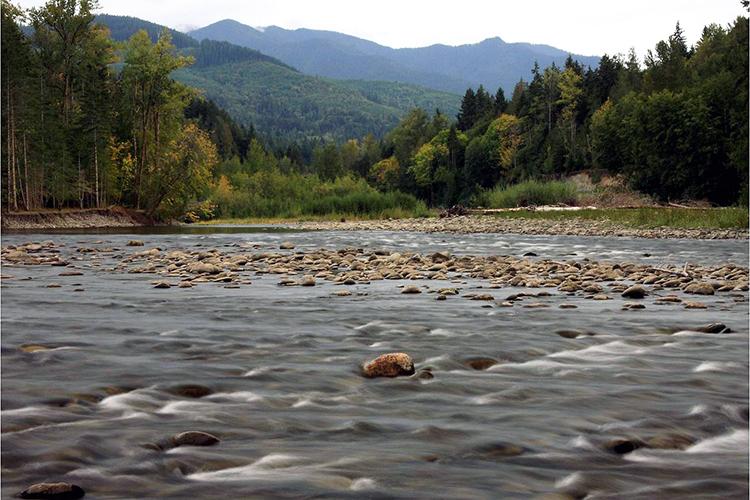A river is more than just a body of water; it serves as a home to a multitude of diverse species, making it an essential habitat for life. Not only does it support various ecosystems, but it also offers an opportunity for recreational activities. Beyond its physical significance, rivers have inspired countless songs that hold different meanings for different individuals. From Creedence Clearwater Revival’s “Green River” to Bob Dylan’s “Watching The River Flow,” and Harry Nilsson’s “River Deep, Mountain High,” these songs transport listeners to a world where themes of nature, love, self-reflection, and overcoming challenges intertwine with the flowing waters. It is through these melodies that the intrinsic role of a river in providing both physical and emotional nourishment is celebrated.
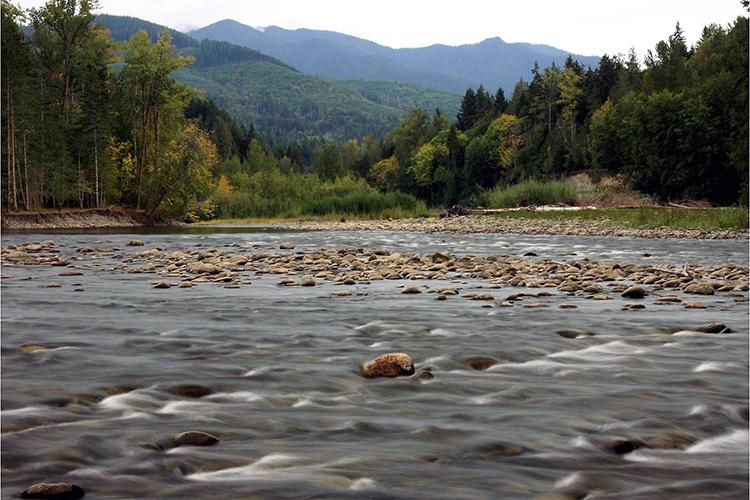
Importance of Rivers as Habitat
Rivers play a vital role in supporting biodiversity by providing habitats for a wide variety of plant and animal species. The intricate web of life that depends on rivers is diverse and includes aquatic plants, insects, fish, amphibians, reptiles, birds, and mammals. The importance of rivers as habitat cannot be overstated, as they provide nesting and breeding grounds, serve as a food source for aquatic life, and contribute to the overall health of ecosystems.
Biodiversity Support
Rivers are teeming with life, making them hotspots of biodiversity. The flowing water and unique conditions of rivers create a wide range of microhabitats, which support the survival of numerous species. Rivers support a vast array of plants, many of which are specially adapted to the flowing water. These plants provide important food and shelter for a variety of aquatic and terrestrial animals, contributing to the overall richness of the ecosystem.
Nesting and Breeding Grounds
For many species, rivers are crucial nesting and breeding grounds. The availability of water and the specific conditions provided by rivers make them ideal locations for raising young. Birds, such as waterfowl and shorebirds, build their nests along the riverbanks, where they can find ample food and protection. Amphibians and reptiles also rely on rivers for breeding, using the riparian areas to lay their eggs and raise their offspring.
Food Source for Aquatic Life
Rivers are bustling with aquatic life, and they serve as an abundant food source for many species. Fish, in particular, rely heavily on rivers for their survival. The flowing water brings a constant supply of nutrients and prey, creating an ideal environment for fish to thrive. Additionally, rivers support a complex food web, with smaller organisms such as insects and crustaceans serving as food for larger fish and other aquatic predators.
Physical Features of a River
Understanding the physical features of a river is essential to grasp its role as a habitat. The unique characteristics of rivers, such as flow and currents, riverbanks and riparian zones, as well as depth and temperature, contribute to the overall health and functionality of the ecosystem.
Flow and Currents
The flow and currents of a river not only shape its physical structure but also influence the distribution of plant and animal species. The speed and turbulence of the water affect the type of organisms that can thrive in different areas of the river. Faster-flowing sections may support species that are adapted to withstand strong currents, while calmer areas may host more delicate plant and animal communities.
Riverbanks and Riparian Zones
The riverbanks and the surrounding riparian zones are critical components of a river’s habitat. These areas, highly influenced by the presence of water, support a diverse range of plants and provide important habitats for animals. The vegetation along the riverbanks helps stabilize the soil, prevent erosion, and filter pollutants. It also provides shade, shelter, and nesting sites for a wide range of species.
Depth and Temperature
The depth and temperature of a river play a significant role in determining the types of organisms that can survive within its waters. Different species have specific temperature preferences and adaptations to different depths. The temperature of a river can have a profound impact on the metabolic rates and reproductive cycles of its inhabitants. Similarly, varying depths provide different habitats for both fish and invertebrates, allowing for increased species diversity.
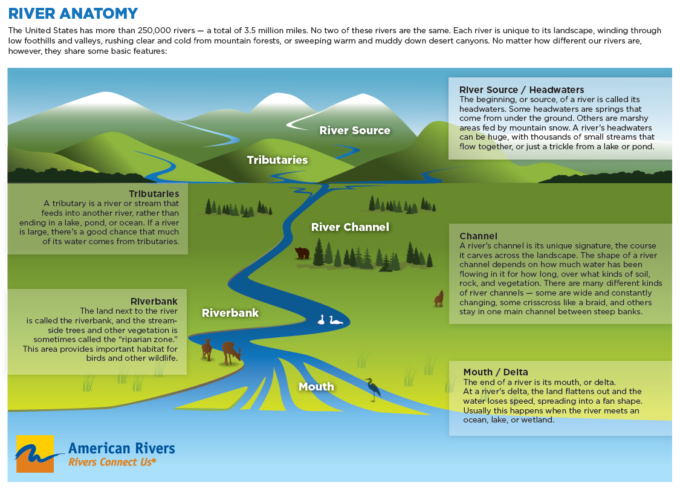
Aquatic Plants and Algae
Aquatic plants and algae are essential components of river ecosystems, serving a variety of vital roles. From providing oxygen for other organisms to acting as a food and shelter source, these plant species are integral to the balance and functionality of rivers.
Crucial Role in Ecosystem
Aquatic plants and algae form the foundation of river ecosystems. They are primary producers, meaning they convert sunlight and nutrients into organic matter through the process of photosynthesis. This organic matter becomes food for a wide range of organisms, starting the flow of energy within the food web. Moreover, aquatic plants provide physical structure, creating habitat complexity and benefits for many species.
Oxygen Production
Through photosynthesis, aquatic plants and algae release oxygen into the water. This oxygenation is crucial for the survival of other organisms, including fish and invertebrates, which require dissolved oxygen to breathe. The ability of rivers to maintain high levels of dissolved oxygen is directly linked to the presence of healthy aquatic plant communities.
Food and Shelter for Fauna
Aquatic plants and algae provide food and shelter for a diverse range of fauna. They serve as a food source for herbivorous organisms, such as certain species of fish and invertebrates. Additionally, their physical structures, such as submerged vegetation or floating mats, offer refuge and nursery areas for young fish, amphibians, and invertebrates. The presence of aquatic plants and algae contributes to the overall health and productivity of river ecosystems.
Fish and Aquatic Life
Fish and other aquatic organisms are integral parts of river ecosystems. They contribute to the overall biodiversity, play important roles in nutrient cycling, and serve as indicators of ecosystem health and water quality.
Fish Species Diversity
Rivers are home to a wide variety of fish species, each adapted to different ecological niches within the river system. The diversity of fish species in rivers is influenced by factors such as water temperature, flow rate, water quality, and the availability of food and shelter. Different species have unique life histories and requirements, which contribute to the overall diversity and richness of river ecosystems.
Migration Routes
Rivers often serve as migration routes for fish, allowing them to move between different habitats for spawning, feeding, and overwintering. Some fish species travel long distances, using rivers as corridors to reach their desired destinations. The connectivity between rivers and other bodies of water is crucial for maintaining healthy fish populations and preserving genetic diversity.
Spawning and Reproduction
Rivers are vital for the spawning and reproduction of many fish species. They provide the necessary conditions, such as appropriate water temperature, flow, and substrate, for successful reproduction. During the spawning season, fish migrate to specific areas within rivers to lay their eggs and ensure the survival of their offspring. The health and availability of suitable spawning habitats directly influence the recruitment and abundance of fish populations.
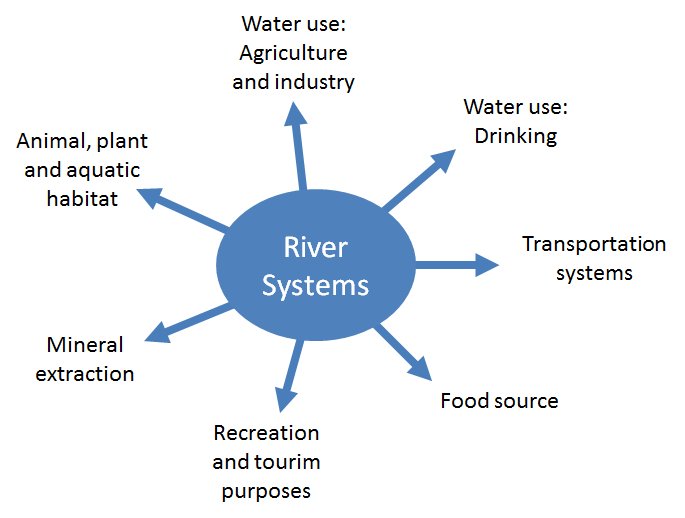
Amphibians and Reptiles
Amphibians and reptiles can be found in and around rivers, making use of the aquatic habitats provided by these ecosystems. From breeding in riparian areas to utilizing the rivers for their larvae’s development, these animals have unique relationships with rivers.
Breeding in Riparian Areas
Rivers and their adjacent riparian areas are critical breeding grounds for many amphibians and reptiles. The moist, shaded environments provided by the riparian zones offer optimal conditions for these animals to reproduce. Amphibians, such as frogs and salamanders, lay their eggs in the vegetation along the riverbanks or in shallow pools of water. Reptiles, such as turtles, may also choose the riparian areas as nesting sites for their eggs.
Aquatic Habitats for Larvae
Many amphibians rely on rivers as aquatic habitats for their larval stages. After eggs are laid, amphibian larvae, such as tadpoles, develop in the water until they undergo metamorphosis and transition to their adult forms. The flowing water of rivers provides the necessary oxygenation and resources for the growth and development of these larvae. Rivers with diverse vegetation and suitable water quality enhance the survival and success of amphibian larvae.
Nesting Sites for Turtles
Rivers often serve as nesting sites for turtles, providing sandy or gravelly areas where these reptiles can lay their eggs. Species such as river turtles and snapping turtles rely on the stability and proper temperature regulation of these nesting sites for successful incubation. The presence of suitable nesting sites along rivers is crucial for the reproduction and survival of these reptile populations.
Birds and River Habitats
Rivers are important habitats for a wide variety of bird species, providing essential resources such as water, food, nesting sites, and migration corridors. From waterfowl and shorebirds to songbirds and raptors, rivers attract a diverse array of avian species.
Waterfowl and Shorebirds
Waterfowl, including ducks, geese, and swans, are frequently observed along rivers, as they rely on the water for feeding, breeding, and raising their young. Rivers provide them with an abundant supply of food in the form of aquatic plants, insects, and small invertebrates. Shorebirds, such as sandpipers and herons, are also commonly found along riverbanks, utilizing the shallow waters to find food and build nests.
Rivers as Migration Corridors
Many bird species rely on rivers as migration corridors, using them as navigational guides and resting areas during their long and arduous journeys. Rivers provide a continuous source of water, food, and habitat for these migrating birds, allowing them to refuel and rest before continuing their journeys. The presence of healthy river habitats is crucial for the successful completion of bird migrations and the maintenance of diverse bird populations.
Nesting and Feeding Sites
The diverse habitats provided by rivers offer important nesting and feeding sites for various bird species. Trees and vegetation along the riverbanks become nesting grounds for songbirds and raptors. The fallen branches or exposed mudbanks can attract birds that feed on insects and invertebrates. Rivers provide a dynamic and productive environment for these birds, ensuring their survival and contributing to the overall biodiversity of river ecosystems.
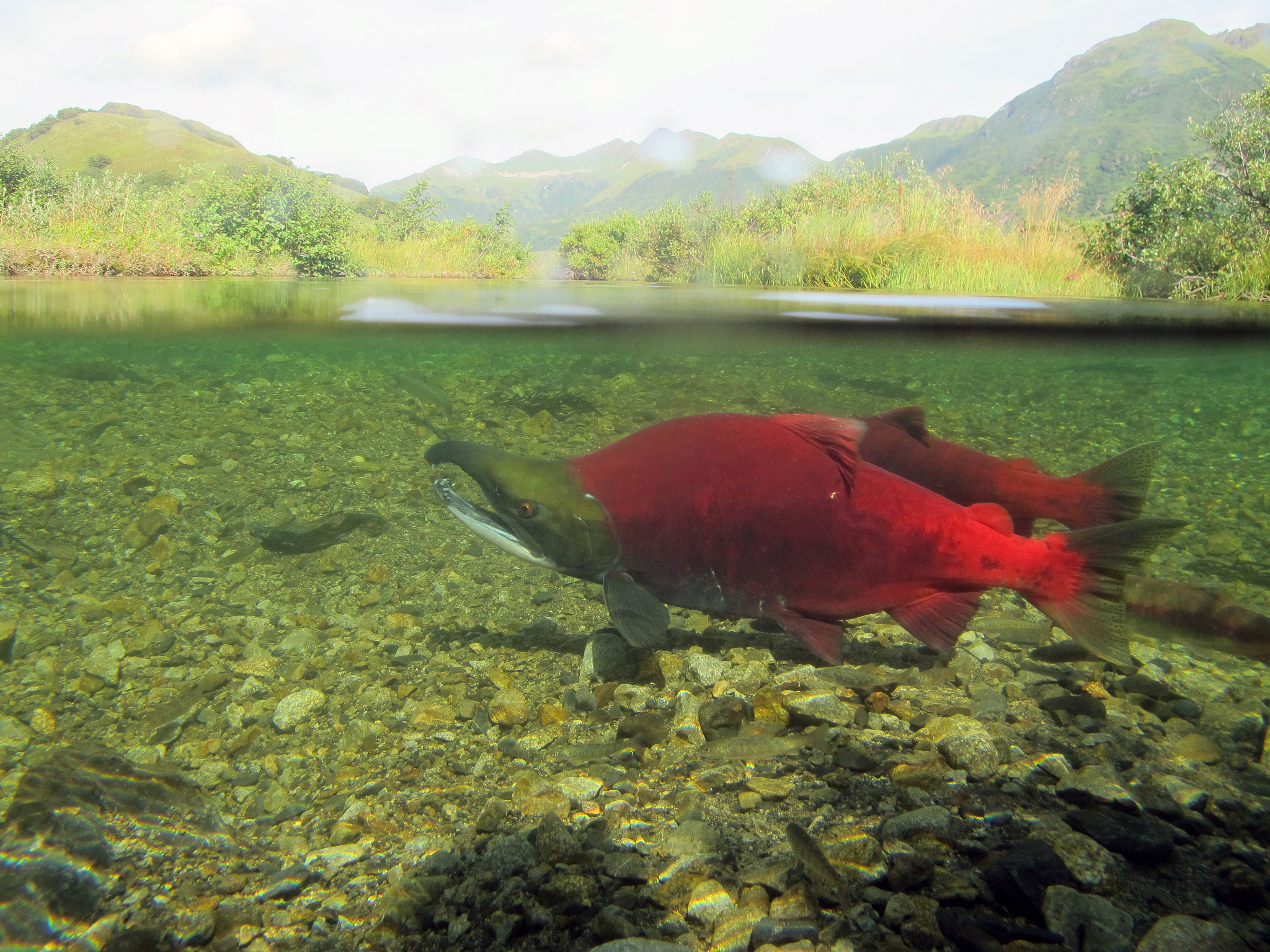
Mammals and Rivers
Rivers are not only important for aquatic life and birds but also play a crucial role in supporting various species of mammals. Whether they are water-dependent mammals or utilize riverbanks as travel routes, these animals rely on rivers for their survival.
Water-dependent Mammals
Water-dependent mammals, such as beavers, otters, and muskrats, have evolved to be highly adapted to river habitats. These mammals rely on the availability of water for foraging, shelter, and protection from predators. Rivers provide a constant water source, essential for their survival and overall well-being. The presence of these mammals also further contributes to the ecological balance and overall health of rivers.
Riverbanks as Travel Routes
For many mammals, riverbanks serve as strategic travel routes. The dense vegetation along the riverbanks can provide cover and protection for species such as deer, raccoons, and foxes as they navigate through their territories. The increased availability of food and water along rivers makes these travel routes essential for these mammals to access resources and establish their home ranges.
Importance for Predators and Prey
Rivers play a vital role in the dynamics between predators and prey. Mammalian predators, such as wolves and bears, may use rivers to hunt and ambush their prey, taking advantage of the limited escape routes and increased availability of food. Similarly, species such as deer and elk utilize rivers as water sources and for protection from predators. The interconnectedness between mammals and rivers is crucial for maintaining healthy populations and ecological interactions.
River Ecosystem Services
In addition to supporting diverse habitats and biodiversity, rivers provide a range of essential ecosystem services to human societies. These services include water supply and irrigation, hydropower generation, and opportunities for recreational activities.
Water Supply and Irrigation
Rivers are an invaluable source of freshwater for human consumption, agriculture, and industrial use. They serve as natural conduits for the transport and distribution of water to communities located along their banks. River water is often used for irrigation, enabling the cultivation of crops and the sustenance of agricultural economies. The reliable flow of water in rivers is essential for meeting human water needs and supporting sustainable development.
Hydropower Generation
Rivers are harnessed as a renewable energy source through the generation of hydropower. The force of flowing water is utilized to generate electricity, providing a clean and efficient energy alternative. Hydropower dams and installations along rivers make use of the river’s natural flow and currents to turn turbines and produce electrical energy. The presence of rivers offers significant opportunities for the production of renewable energy and contributes to reducing carbon emissions.
Recreational Activities
The beauty and tranquility of rivers make them ideal locations for various recreational activities. River-based activities, such as fishing, boating, swimming, and rafting, attract individuals seeking leisure and adventure. Rivers also provide opportunities for nature appreciation and relaxation, with scenic riverbanks and diverse wildlife to be observed. By incorporating rivers into recreational pursuits, people can develop a deeper connection with nature and a greater appreciation for the importance of these habitats.

Threats to River Habitats
Despite their importance, river habitats face numerous threats that can impact their health and resilience. It is crucial to address these threats to ensure the long-term survival and functionality of rivers as critical ecosystems.
Pollution and Contamination
Rivers are susceptible to various forms of pollution and contamination. Agricultural run-off, industrial discharge, and improper waste disposal can introduce harmful substances, such as pesticides, fertilizers, heavy metals, and toxins, into rivers. Pollutants degrade water quality, adversely affecting the health of plants, animals, and humans that rely on rivers. Addressing pollution is vital for maintaining the integrity of river habitats and protecting the species that depend on them.
Habitat Destruction and Fragmentation
Human activities can lead to the destruction and fragmentation of river habitats. Clear-cutting of forests, urban development, and the construction of dams and levees disrupt the natural flow and connectivity of rivers. These changes can alter the physical structure of rivers, destroy nesting and breeding grounds, and restrict the movement of aquatic life. Maintaining and restoring the natural hydrological and ecological processes of rivers is necessary to preserve their habitats and the biodiversity they support.
Invasive Species
Invasive species pose a significant threat to river habitats by outcompeting and displacing native species. Their introduction can disrupt the balance of ecosystems and impact the availability of food and resources for other organisms. Invasive plants, such as water hyacinth and hydrilla, can choke rivers and hinder the growth of native vegetation. Invasive fish and invertebrate species can prey upon or displace native populations. Preventing the introduction and spread of invasive species is crucial for maintaining the health and functionality of river ecosystems.
Conclusion
Rivers are much more than bodies of water; they are complex ecosystems that support a wide range of plant and animal life. From serving as vital breeding and feeding grounds to offering migration corridors and nurturing crucial habitats, rivers play an indispensable role in maintaining biodiversity and the overall health of our planet. Understanding the physical features and intricate relationships within river ecosystems is crucial for their conservation and the preservation of the services they provide. By recognizing the importance of rivers as habitats and addressing the threats they face, we can work towards safeguarding these valuable and unique ecosystems for generations to come.

